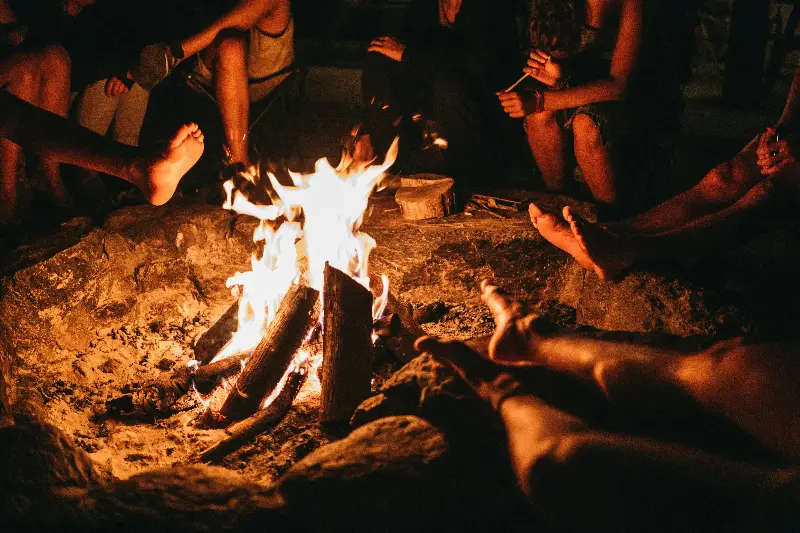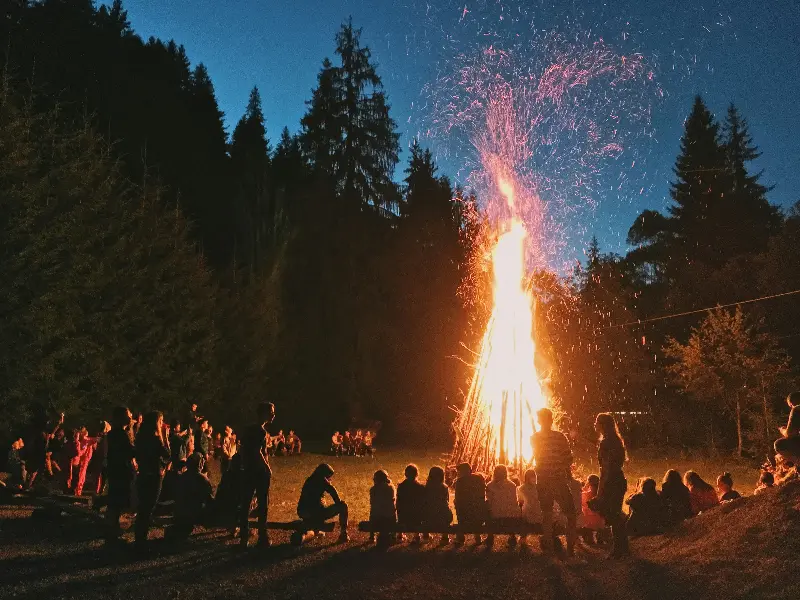Bonfires have radiated warmth and awe for centuries, connecting people across continents and time periods in a way few traditions can claim. Whether set against the backdrop of summer festivals or solemn ceremonies, these great fires aren’t mere sources of heat or light; they are beacons of joy, mystery, and celebration. Why have bonfires sparked such enduring fascination, and what do they reveal about the humans drawn to their glow? It’s a story woven through rituals, legends, and a collective urge for connection.

The Ancient Roots Of Bonfire Traditions
Long before patios and backyard fire pits became fashionable, our distant ancestors gathered around roaring flames. Some of the earliest archaeological findings suggest that controlled fire was central not just to survival, but to communal gathering. As civilizations grew, bonfires took on a spiritual and symbolic role—one that was both practical and mysterious. In ancient Celtic culture, massive fires blazed during festivals like Beltane and Samhain, marking seasonal changes and believed to protect people and livestock from evil spirits.
In India, the festival of Holika Dahan, leading up to the famous Holi festival, involves lighting bonfires to symbolize the triumph of good over evil. This vivid, colorful celebration springs from tales in Hindu mythology and is echoed in countless cultures that use fire as a metaphor for renewal, transformation, or cleansing. The very word “bonfire” is believed by some scholars to originate from “bone fire,” as ancient Gaelic communities burned animal bones to ward off evil and ensure fertility for the coming year.

Bonfires As Portals For Celebration And Connection
Few sights are as universally stirring as flames leaping skyward under the stars. Across the ages, bonfires have been at the heart of communal celebration, drawing people together in shared experience. Today, they mark major occasions: St. John’s Eve in Spain and Portugal sees towns glow with celebratory bonfires; in Britain, Guy Fawkes Night lights up the early November darkness in a collective memory of intrigue and plot. Even in the United States, Fourth of July gatherings often culminate with a cheerful, crackling fire—sometimes replacing or accompanying fireworks.
Why the enduring appeal? On a primal level, the bonfire provides warmth and security, creating a natural focal point for gathering. Psychologists suggest the soft light and warmth encourage relaxation and storytelling, helping bonds form and deepen. Some traditions honor this explicitly—Scandinavians might sing and dance around a Midsummer bonfire, while West African communities celebrate cultural milestones by gathering for night-long drumming, dancing, and fireside feasts.

Ritual, Mystery, And Symbolic Power
It’s not merely the flames, but the stories, rituals, and beliefs surrounding bonfires that give them their deepest resonance. In many cultures, fire is considered a bridge to the divine or a way to keep malign forces at bay. In Japan, the “Gozan no Okuribi” festival sees massive fires lit on Kyoto’s mountainsides, believed to guide ancestral spirits back to the spirit world.
The mystery of fire’s purifying power is a recurring theme. During the Persian festival of Chaharshanbe Suri, Iranians jump over bonfires to symbolically rid themselves of the previous year’s misfortunes. On New Year’s Eve in Ecuador, effigies representing the regrets and troubles of the year are burned in huge street bonfires, helping people start fresh.
Historically, bonfires also played a role in signaling and communication. During times of war or celebration, ancient societies used massive fires as beacons—alerting towns or marking borderlands. These blazing messages were visible for miles, turning bonfire light into a language all its own.

Modern Bonfires: Nostalgia And New Traditions
In our hurried, digitally connected age, bonfires seem to offer an antidote. Whether large or small, they create spaces for reconnection—with nature, with each other, and with our own histories. Campfire storytelling, marshmallow roasting, and guitar singalongs bring a sense of nostalgia, inviting people to slow down and savor the moment.
City festivals and rural rituals alike have adapted bonfire traditions to fit modern life. Communities around the world have found new meaning in these ancient flames, from Latvia’s Līgo festival by the riverbanks, to South Korea’s Jeongwol Daeboreum “full moon fire” celebrations, where locals burn Daljip—bushes or small wooden structures—to ensure good luck for the year.
Bonfires In The Digital Age: Enduring Appeal
Despite technological strides, there’s something elemental in our ongoing love for bonfires. Social media is filled with photos of glowing embers and friends silhouetted against the light, affirming that even today, the primal magic of fire gathers us together. Families, friends, and even strangers pause to share stories, sing old songs, and enjoy the meditative trance of flickering flames.
In a world that often feels fragmented or rushed, bonfires invite us to celebrate, reflect, and reconnect. They remind us that beneath all our differences, we share a deep-seated longing: to gather around the warmth of a shared flame, gaze into its mystery, and celebrate the traditions that fire inspires in every culture. Through joy, celebration, and a touch of mystery, bonfires continue to spark timeless wonder—a living link between our past, present, and future.
